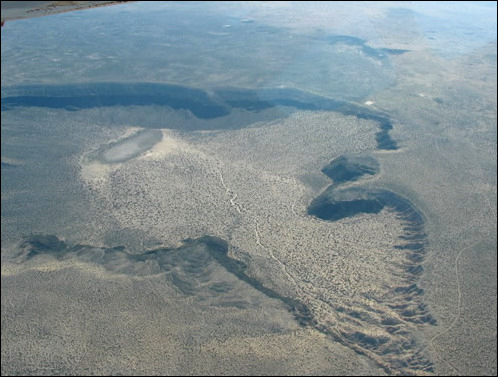

Many psychologists agree that blowing off steam to relieve pressure is a good thing. Many others point out that being the object of such pressure-releasing is far from a fun thing. Actually, in nature as in so many things, it depends, and sometimes it's the other way around: relieving pressure causes the blowup. Many violent volcanic eruptions occur when magma reaches far enough toward the surface that the decreasing pressure from overlying rock allows sudden release of gases from solution—much as prying loose a cork releases a spume of foamy champagne.
On the other hand, geologists suggest that the type of crater called a
maar may be formed when molten rock encounters ground water that flashes into steam,
greatly and suddenly increasing pressure—with disastrous results. Kilbourne Hole, a
maar in southern New Mexico, is over a mile wide. So far, it all sounds bad,
doesn't it? However, the building up of steam pressure in some natural objects
until they blow often is a matter of happy anticipation. Think about it. When's the
last time you popped corn?

Desert Diary is a joint production of the Centennial Museum and KTEP National Public Radio at the University of Texas at El Paso.

Kilbourne Hole from the air. Photograph courtesy of Aaron Velasco and Jose M. Hurtado, Jr., Dept. of Geological Sciences, University of Texas at El Paso.